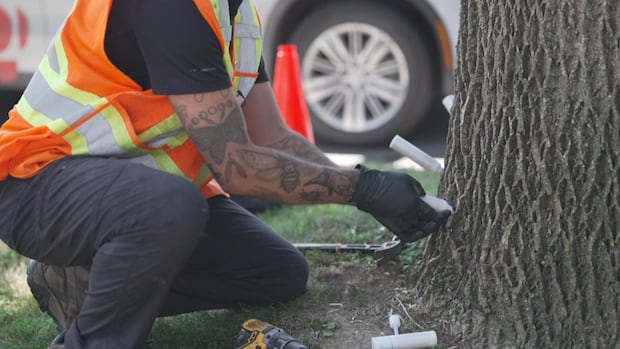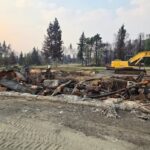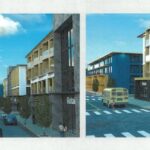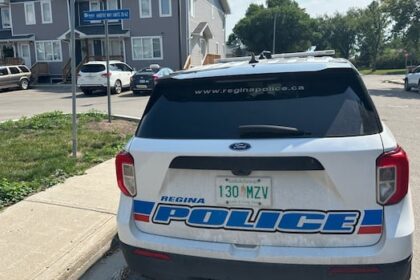New BrunswickThe City of Fredericton is sending forestry teams to vaccinate its ash tree population in a bid to protect them from the growing emerald ash borer population.Findings per tree have increased since discovery of emerald ash border in city in 2021Ian Curran · CBC News · Posted: Aug 12, 2025 5:00 AM EDT | Last Updated: 3 hours agoCity of Fredericton crew members vaccinate ash trees with TreeAzin insecticide to protect them from the invasive emerald ash borer. (Aniekan Etuhube/CBC)The City of Fredericton continues to battle an invasive beetle that has been killing ash trees on public and private land.First discovered in Fredericton in 2021, the emerald ash borer has spent the last four years thriving on the region’s trees, leading to a population boom of the persistent and nearly impossible to eradicate insect.The invasive species, originating in eastern Asia, has killed millions of ash trees across Canada in the past 23 years.City officials have sent out teams of forest technicians like Ben Shannon, who inject ash trees with TreeAzin insecticide and set up pheromone luring traps to battle the increasing threat.Ben Shannon is a forest technician for the City of Fredericton and spends his days vaccinating and caring for its ash trees. (Ian Curran/CBC)”There is almost nothing you can do to stop the beetle from establishing itself here,” Shannon said.”Our goal here is to slow it down to sustain our urban canopy.”Shannon said the loss of ash trees, which make up 12 per cent of the urban canopy, would cripple the city’s natural infrastructure.”That’s a whole lot more sun hitting the pavement and heating up our city, contributing to climate change and a whole lot [fewer] trees soaking up rain water,” he said.”We’re doing those treatments to slow down the loss of those trees.”The invasion was first detected in the Waterloo Row and Forest Hills area. Infestations have since spread to trees on both the north and south sides of the city.WATCH | ‘I’m scared to see it progress into the next few years,’ says city worker: See how Fredericton protects its urban ash treesA growing population of invasive beetle, the emerald ash borer, threatens to kill ash trees across Fredericton in the next 15 years, according to experts.Initially, forest technicians were catching one or two beetles in their traps. Now, they’re seeing 20 to 50 beetles per trap.”It’s all over the city, and that population increase is going to follow everywhere,” said Shannon. “I’m scared to see it progress into the next few years, but it’s also nice to see the trees we are treating faring pretty well.”A provincewide pestThe emerald ash borer was first discovered in northwestern New Brunswick in 2018.It then spread from Edmundston down to Siegas and eventually to Fredericton, Oromocto and Moncton, according to a 2024 forestry report from the province.A map from a 2024 report outlining emerald ash borer populations in the province. (Government of New Brunswick)Clarissa Hoffman, a terrestrial project co-ordinator for the New Brunswick Invasive Species Council, has been monitoring this spread across the province and working closely with municipalities.”Communities have been really proactive in the province about … monitoring for emerald ash borer,” said Hoffman. “When they’re aware it’s established in their communities, [they] have been great at being proactive at managing their ash populations.” Hoffman said that the City of Fredericton has an unusually high percentage of ash in its urban landscape compared to other places in New Brunswick.”Typically once emerald ash borer arrives in a community it only increases,” said Hoffman. “It will continue to increase until it has reached critical mass and has destroyed the available ash population, at which point it will fall again.”Places like Ontario, where the emerald ash borer has been prevalent for over two decades, are seeing over a 90 per cent mortality in their ash tree population over a five-year period.She believes it’s possible for Fredericton’s fate to follow a different path, however.”There is hope in the future,” Hoffman said. “There are bio-control treatments, new insecticides and different treatments that are being worked on all the time, and new ones that are coming out all the time.” “In the next 10 to15 years,” she said, “we could see a lot of change.”ABOUT THE AUTHORIan Curran is working with the Fredericton bureau at CBC News. You can contact him with story ideas at ian.curran@cbc.ca.
Invasive beetle on a rampage through ash trees in Fredericton











